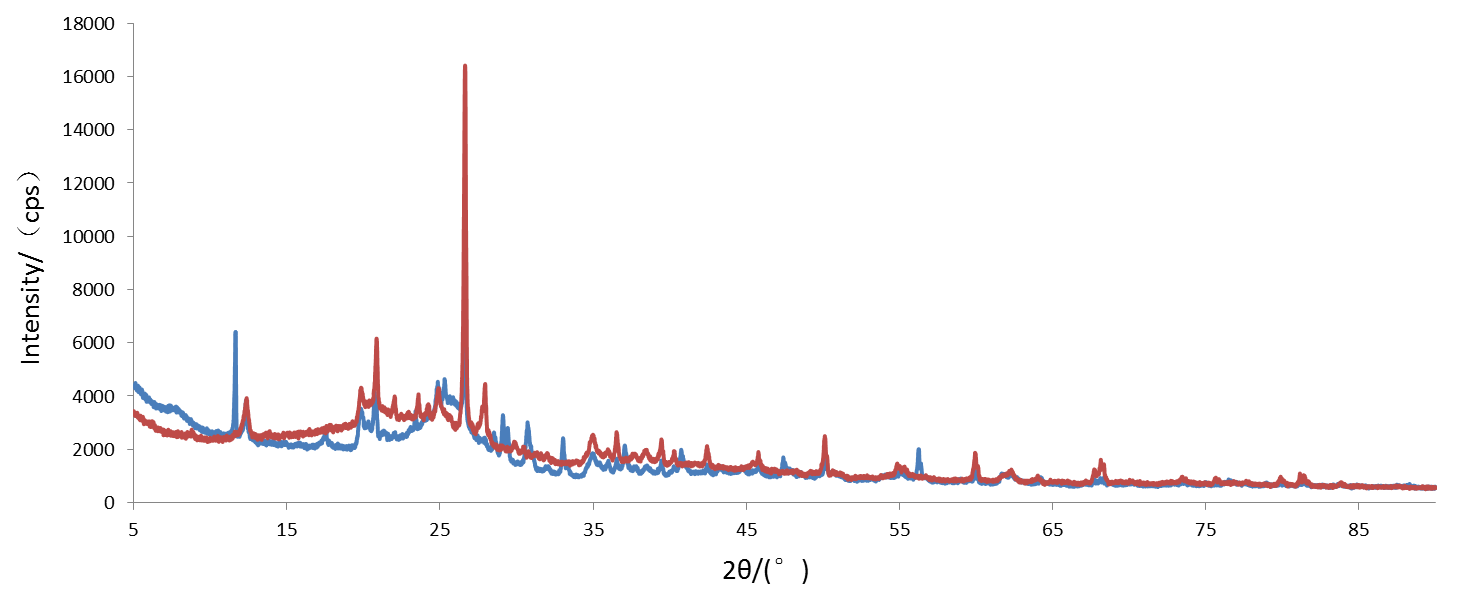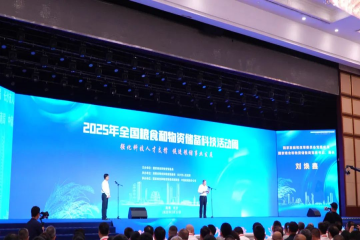Abstract: In recent years, some research institutions began to adopt near infrared spectroscopy (NIRS) for rapid coal quality analysis. This paper introduces the basic principle and characteristics of NIRS, and its application in petrochemical, pharmaceutical and food fields. Based on the analysis of the principle of NIRS and the composition of coal, the conclusion drawn is that NIRS is not feasible for the determination of moisture, ash content, volatile matter, fixed carbon, total sulfur and calorific value in coal.
Key Words: Near infrared spectroscopy; X-ray diffraction; Moisture; Ash content; Volatile matter; Total sulfur; Calorific value.
1. Introduction
As a very important petrochemical energy, coal accounts for more than 50% of China's primary energy, which can be used for power generation, coking and iron making. Different uses of coal have different requirements on the quality of coal, and the analysis of coal quality is to understand whether the quality of coal meets the requirements. Therefore, the customers urgently need a rapid coal quality testing equipment. Since the 1980’s, many companies and research institutions invested considerable resources in coal rapid detection technology, such as X-ray transmission for rapid ash measurement, dual-energy gamma ray transmission for ash measurement, high energy pulse laser spectroscopy online element analysis, neutron activation online coal quality analyzer, microwave online moisture analyzer, X-ray fluorescence spectrum online coal quality analyzer, etc.; In recent years, a new branch of rapid coal analysis technology has been developed - near infrared spectroscopy (NIRS), which is used for rapid detection of moisture, ash, volatile matter, fixed carbon, total sulfur and calorific value in coal. This paper introduces the basic principle of near-infrared spectroscopy and its application in chemical industry, medicine and food, together with the basic composition of coal, and also studies the feasibility of the application of near infrared spectroscopy in rapid coal quality detection.
2. Basic Principle of Near Infrared Spectroscopy
According to the regulation of American Society of Testing Materials (ASTM), near-infrared light refers to the electromagnetic wave with a wavelength of 780 ~ 2526nm. Spectral absorption in this region is mainly related to hydric group in organic matter, such as the absorption of frequency multiplication and combination tone of fundamental frequency vibration of C-H, O-H, N-H, S-H, and other chemical groups have little influence on this region. Within this wavelength range, specific hydric groups have their corresponding characteristic absorption and conform to Lambert-beer law, which is the theoretical basis of qualitative law analysis of NIRS. NIRS is a kind of chemical analysis technology developed in the 1990s. With the advantages of in situ analysis, no need of chemical reagent and online rapid detection, it has been widely used in the fields of petrochemical industry, pharmaceuticals and food.
3. Applications of Near Infrared Spectroscopy
3.1 Applications of Near Infrared Spectroscopy in Petrochemical Industry
Hydrocarbon compounds are the main component of petrochemical products, and the structure and component content of hydrocarbon compounds determine the quality of petrochemical products. Hydrocarbons are consist of carbon, oxygen and hydrogen (C, H, O - H group) compounds, thus in petrochemical field application of near infrared spectral analysis technology to analyze oil is appropriate. Liu sha [2] used near-infrared spectroscopy to quickly determine the composition of gasoline family. Li Kezhong [3] used near-infrared spectroscopy to determine the content of aromatics and olefin in blended gasoline. Feikang Yuntian [4][5] used near-infrared spectroscopy to determine octane content in gasoline. Xu Guangtong [6] believed that by analyzing the correlation between near infrared spectroscopy and the properties of diesel oil, parameters such as cetane value and density could be analyzed by NIRS. Wang Yanbin [7] used NIRS to determine the chemical composition of lubricating oil, and believed that the test results were of guiding significance for the quality control of lubricating oil production and the development and preparation of lubricating oil.
3.2 Applications of Near Infrared Spectroscopy in Pharmaceutical Industry
NIRS is widely used in the field of medicine. It can be applied to drugs in different states, such as API, tablet, capsule, liquid, protein, Chinese herbal medicine, antibiotics and other different types of drugs. Ding Nianya [8] studied the application of near-infrared spectroscopy in the classification and authenticity identification of traditional Chinese medicine. Jia Nuan [9] determined the content of norfloxacin capsule by NIRS. Huang Fang [10] quantitatively analyzed vitamin C, acetaminophen and artificial befoar in the drugs by NIRS.
3.3 Applications of Near Infrared Spectroscopy in Food Industry
Organic compounds are the most important components in food, such as proteins, fats, organic acids and carbohydrates, etc. These compounds all contain different hydrogen-containing groups, and the content of them can be detected by near-infrared spectroscopy. Norriss[11] used near-infrared spectroscopy to accurately determine water, protein and fat in cereals, wheat, barley and other agricultural foods. Zhiqing Wen[12] used near-infrared spectroscopy technology to realize rapid identification of apple surface defects. S. Siivakesava accurately measured tetracycline hydrochloride in milk by Fourier transform near infrared spectroscopy and Fourier transform middle infrared spectroscopy.
3.4 Applications of Near Infrared Spectroscopy in Coal Quality Analysis
Dong Won Kim, Jong Min Lee and Jae Sung Kim[17] simultaneously measured moisture content, ash content, volatile matter, fixed carbon, sulfur and calorific value in coal by NIRS. Li Fengri[16] believed that the volatile matter and calorific value in coal could be measured by NIRS based on analysis, and the correlation coefficients were 0.94 and 0.92, respectively. Zhang Lin [13] believed that the index of total moisture, ash and volatile matter in coal could be determined by NIRS. Visible near infrared spectroscopy (NIRS), as a kind of detection technology containing hydrogen groups, has been widely used in petrochemical industry, food safety, pharmaceuticals and other fields after continuous development. Visible near infrared spectroscopy (NIRS) has been recognized by people. Some researchers have even used this technology to detect coal moisture, ash content, volatile content, fixed carbon, total sulfur and calorific value. The feasibility of this technology will be further analyzed later in this paper.
4. The Composition of Coal
The components of coal include water, mineral substance and organic matter. Water includes free water and compound water. Minerals are organic matter except moisture in coal, it includes minerals that exist alone(kaolin, montolivo, sulfide ore, quartz stone, galena, carbonate, silicate salt, sulfate mineral, oxide and hydroxide mineral, etc.), inorganic elements that combine with organic matter in coal (exist as carbonyl salts), and trace elements. Modern scientific research has proved that the organic matter of coal is formed by the combination of many basic structural units with similar but not identical structure, including aromatic structure, aliphatic structure and aliphatic structure. Figure-1 is the scanning diagram of two different coal by X-ray diffraction analyzers. The X-ray diffraction diagram shows that the forms of different coal compounds are completely different.
Figure-1 XRD Diagram of Two Different Coals
5. Feasibility Analysis of Near Infrared Spectroscopy for Coal Quality Detection
According to the available literature, NIRS is mainly used to detect moisture, ash content, volatile matter, fixed carbon, total sulfur and calorific value in coal. This paper will analyze the feasibility of detecting the above indexes one by one.
5.1 Feasibility of Moisture Detection
The chemical formula of water is H2O, which is composed of two O-H groups. As described above in this paper, NIRS is a technique for detecting hydrogen-containing groups. Therefore, theoretically, NIRS can be used to detect the total moisture in coal. According to literature [14][17], the absorption of NIRS by O-H groups is also used to detect the moisture index in coal. However, not only moisture in coal contains O - H group, aromatic structure, alicyclic structure, and aliphatic structure, which are the basic structure unit of organic matter in coal, also contains a lot of O - H group, and will absorb the near infrared spectrum. Therefore, the response of NIRS to O - H group can only reflect the content of O - H group in coal, but not the the moisture content in coal.
5.2 Feasibility of Ash Content Detection
Ash content refers to the residues obtained after the coal has been burnt under the specific temperature, the organic matter has completely burnt out, and minerals have been through a series of chemical reactions. The main components of it include sodium, magnesium, aluminum, silicon, phosphorus, sulfur, calcium, iron oxides, manganese, potassium and other mineral elements. It can be seen that ash and hydrogen groups do not have any direct and indirect relation. References [14][17][13] all calculated ash content by multiple regression algorithm based on the absorption information of hydrogen-containing groups to the near-infrared spectrum. This calculation logic is wrong. Ash content has no correlation with hydrogen-containing groups, so it is not possible to calculate ash content by using NIRS, which is sensitive to hydrogen-containing groups.
5.3 Feasibility of Volatile Matter Detection
Volatile matter in coal refers to the mass loss of coal after air heating and moisture correction under specified conditions, which mainly includes methane, ethane, ethylene, propylene, carbon monoxide, carbon dioxide, hydrogen sulfide and benzene and phenols in liquid form at room temperature. It can be seen that the volatile matters contain C-H、O-H、N-H、S-H and other groups, but the moisture in coal and fixed carbon also contain C-H、O-H、N-H、S-H and other groups. While the near infrared spectral analysis method is able to determine the content of C-H、O-H、N-H、S-H groups, but unable to distinguish which belongs to volatile hydrogen groups, which belong to the moisture and fixed carbon hydrogen group. The proportion of different coal is different, so it is not feasible to determine volatile matter in coal by near infrared spectral analysis.
5.4 Feasibility of Fixed Carbon Detection
Fixed carbon in coal refers to the residue after the determination of coal sample volatilization minus ash content. In other words, the amount of fixed carbon is equal to the amount of coal minus the moisture, ash and volatile matter in the coal. It is not pure carbon, and its composition is uncertain. So the fixed carbon is not detected, but calculated by subtraction. However, according to the previous analysis in this paper, the volatile matter and ash matter in coal cannot be determined by NIRS, so fixed carbon cannot be calculated.
5.5 Feasibility of Total Sulfur Detection
There are two types of sulfur in coal: organic sulfur and inorganic sulfur. Organic sulfur refers to sulfur that exists in combination with organic matter (mercaptan, thioether, cephhene, etc.), while inorganic sulfur refers to sulfur that exists in combination with inorganic matter (sulfide sulfur, sulfate sulfur, elemental sulfur). Obviously, S-H groups do not exist in inorganic sulfur, while compounds containing S-H groups in organic sulfur include thiols and cephens. It can be seen that even if the content information of S-H group in coal is obtained by NIRS, the content information of total sulfur in coal cannot be obtained. In literature [15], the examples and relevant standards of the application of NIRS in sulfur measurement in coal are all infrared absorption method rather than NIRS method.
5.6 Feasibility of Calorific Value Detection
The heat produced by the complete combustion of coal per unit mass is called the calorific value of coal. The combustible substance in coal only includes volatile matter and fixed carbon, and coal is composed of moisture, ash, volatile matter and fixed carbon. Therefore, the calorific value of coal can be obtained in three ways: (1) directly measured by oxygen vessel calorimeter;(2) measure volatile matter and fixed carbon, then obtained by calculation;(3) measure moisture and ash, then obtained by calculation. Therefore, the calorific value of coal is correlated with the sum of volatile matter and fixed carbon, and with the sum of moisture and ash, rather than with volatile matter as mentioned in literature [16]. From the previous analysis, it can be known that NIRS method is unable to conduct quantitative analysis of volatile matter, fixed carbon, ash and moisture in coal, so it is impossible to determine the calorific value of coal by NIRS.
6. Conclusion
To sum up, NIRS has advantages such as in situ analysis, no need of chemical reagent and online rapid detection, and has been widely used in petrochemical, food and pharmaceutical fields. However, NIRS is primarily sensitive to hydrogen groups of sample, while moisture, volatile matter in coal, ash content, fixed carbon, total sulfur and calorific value have no relation with hydrogen groups in coal. Therefore, it has no theoretical feasibility to determine moisture, volatile matter in coal, ash content, fixed carbon, total sulfur and calorific value by NIRS. It is concluded that the results of each index in the coal obtained by this technology have no reference value.
References
[1] Yuan Hongfu, Lu Wanzhen. Near infrared spectroscopy is rapidly entering the field of petrochemical industry [J]. Petroleum refining and chemical engineering, 1998,29 (9) : 47-50.
[2] Liu Sa, Zhu Hong, Zhu Xiaoli. Rapid determination of gasoline group composition by near infrared spectroscopy [J]. Acta analytica sinica, 2002, 21 (1) : 40 ~ 43.
[3] Li Kezhong, Yin Zongling. Rapid determination of aromatics and olefin contents in blended gasoline by near infrared spectrometer [J]. Analytical test technology and instrument, 2002, 8(1) : 48 ~ 52.
[4] Li Weimin, Wu guoying, Lin Xiping. Study on gasoline octane number neural network model based on near-infrared spectroscopy [J]. Journal of Jiangsu institute of technology, 2005. 17(3) : 16 ~ 18.
[5] Feikang Yuntian, Li Jingqing. Determination of octane number of gasoline by near infrared spectroscopy [J]. Modern science instrument, 2002, (1) : 50 ~ 52.
[6] Xu Guangtong, Liu Zelong, Yang Yurui. Determination of diesel oil composition by near infrared spectroscopy and its application [J]. Acta petrolei sinica, 18 (4) : 65 ~ 71.
[7] Wang Yanbin, Guo Qingzhou, Lu Wanzhen. Determination of chemical group composition of lubricating oil base oil by near infrared analysis [J]. Petrochemical industry, 2001, 30(3) : 224 ~ 227.
[8] Ding Nianya, Li Wei. Application of near-infrared diffuse reflection spectrum in classification and authenticity identification of traditional Chinese medicine [J]. Computer and applied chemistry, 2008, 25(4) : 499 ~ 502.
[9] Jia Nuan, Liu Lili. Determination of norfloxacin capsules by NIRS diffuse reflectance spectrometry [J]. Chinese Journal of Pharmaceutical Analysis, 2002, 22(2) : 122 ~ 125.
[10] Huang Fang. Application of near infrared spectroscopy in drug analysis. Jilin University, 2004
[11] Norris K H. Optimatation of Mathematical Treatments of Raw Near Infrared Signal in the measurement of Protein in Hard Red Spring wheat[J]. Computer and applied chemistry, 2008, 25(4) : 499~502
[12] Zhiqing Wen, Yang Tao. Fuzzy-based determination of model and parameters of dual-wavelength vision system for on-line apple sorting[J]. Opt.Eng, 2008, 37(1) : 293~299
[13] Zhang Lin, Lu Huishan, Yan hHongwei, Gao Qiang. Quantitative analysis of coal quality by near infrared spectroscopy [J]. Infrared technology, 2013,35 (8) : 522-525.
[14] Wan Wene. Study on near-infrared testing method of total moisture and ash content in coal [J]. Clean coal technology, 2016,22 (3) : 26-29.
[15] Zhang Hui, Zhong Zhiguang, Zhang Haifeng. Application and prospect of near-infrared spectroscopy in coal quality analysis [J]. Clean coal technology, 2015,21 (6) : 40-42, 51.
[16] Li Fengrui, Tang Yuguo, Xiao Baolan. Measurement of calorific value of coal by near-infrared spectroscopy [J]. Power station systems engineering, 2004,20 (3) : 19-20.
[17] Dong Won Kim,Jong Min Lee,Jae Sung Kim. Application of near infrared diffuse reflectance spectroscopy for on-line measurement of coal properties[J]. Korean J.Chem.Eng,2015,21(6):40-42,51.
[18] Li Xuanhuai. Rapid determination of sulfur content in coal by near infrared spectroscopy [J]. Clean coal technology, 2015,21 (6) : 37-39






